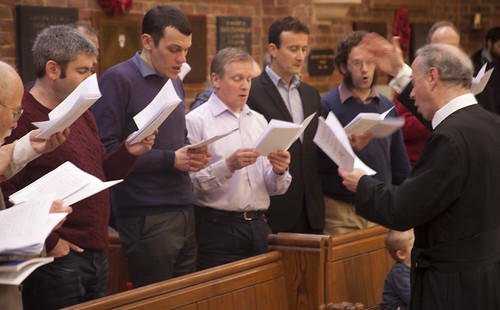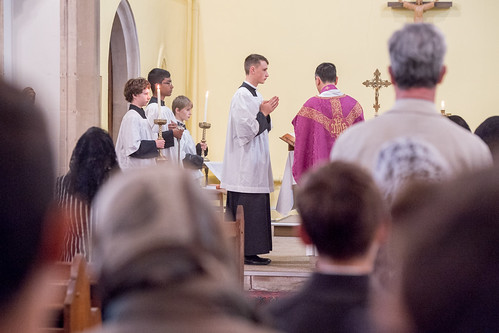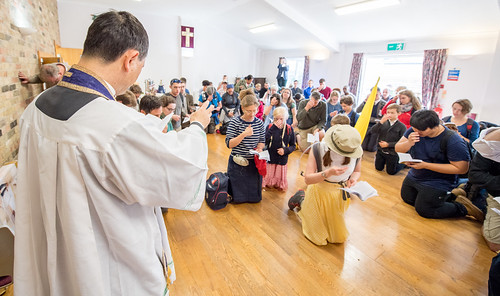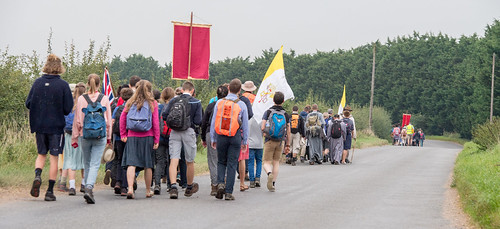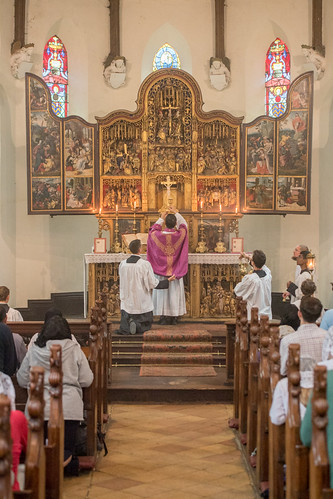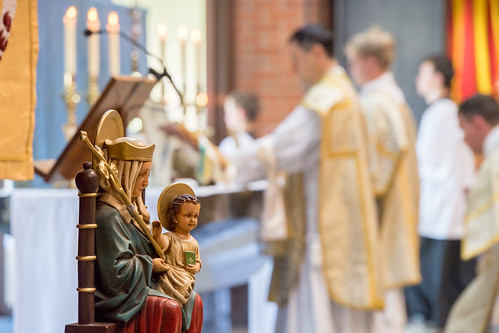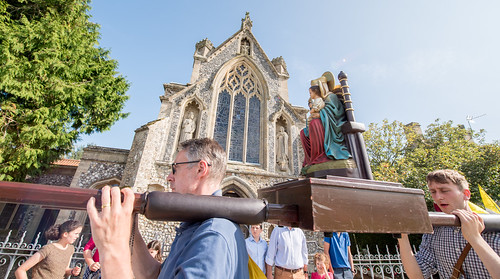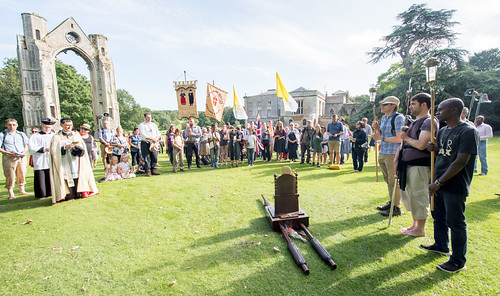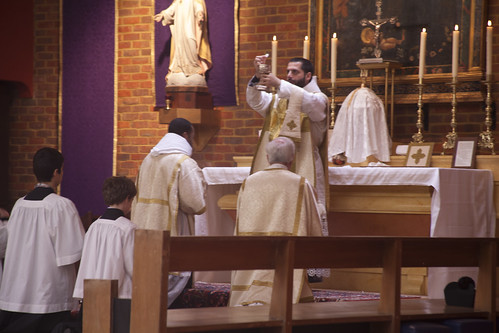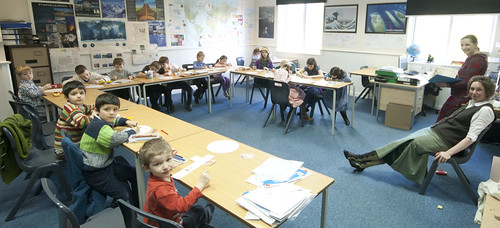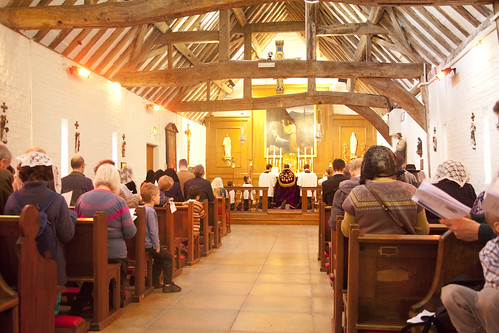Chairman's Blog
London Triduum Photographs
 |
| Tenebrae |
I attended all of the Triduum in St Mary Moorfields, organised by the Latin Mass Society, this year, for the first time.
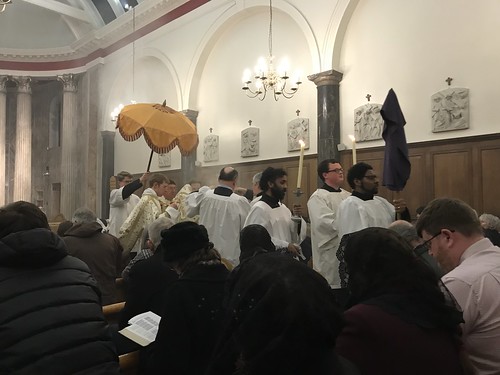 |
| Taking the Blessed Sacrament to the Altar of Repose on Maundy Thursday |
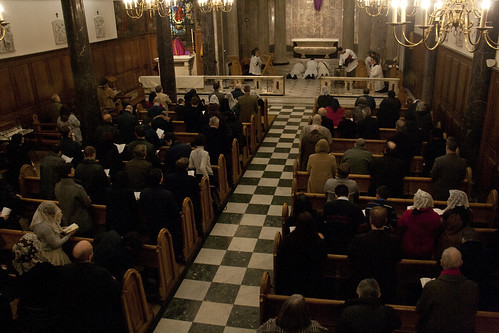 |
| Prostration on Good Friday |
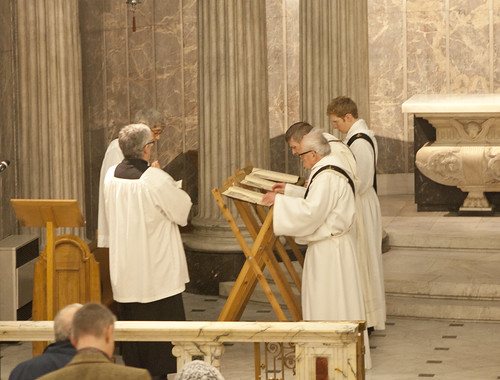 |
| The Passion on Good Friday |
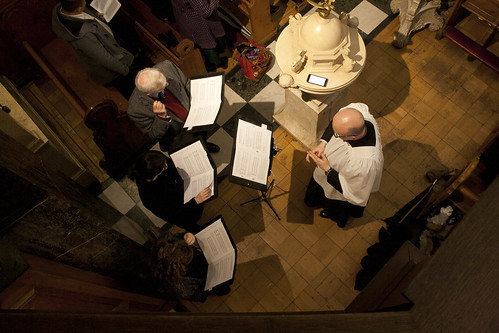 |
| The 'crowd' (turba) sung polyphonically by the crowd during the Passion |
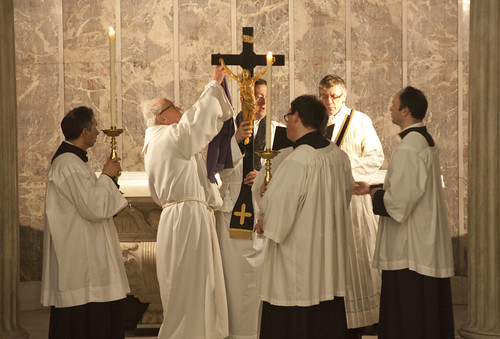 |
| Revealing the Crucifix |
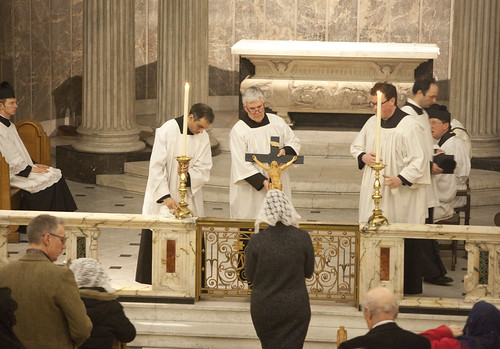 |
| Venerating the Crucifix |
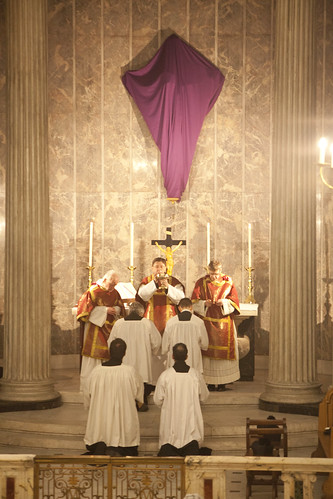 |
| The Blessed Sacrament, from the Altar of Repose |
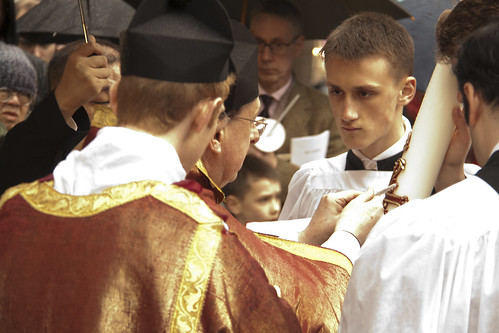 |
| Blessing the Paschal Candle at the Easter Vigil |
 |
| Processing back into church |
 |
| Candlelit interior during the Vigil |
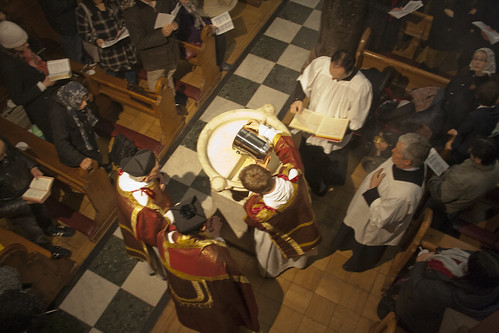 |
| Newly blessed water for the baptismal font |
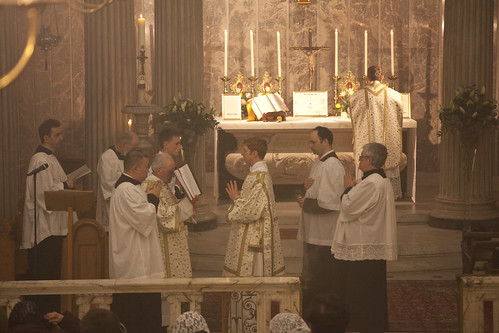 |
| Easter Vigil Gospel |
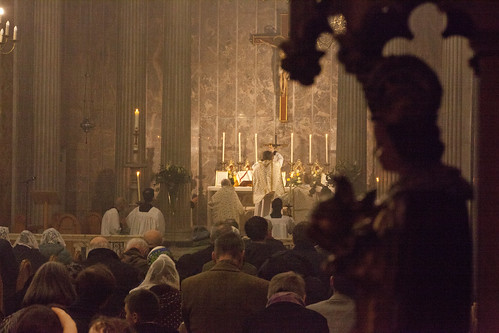 |
| Elevation |
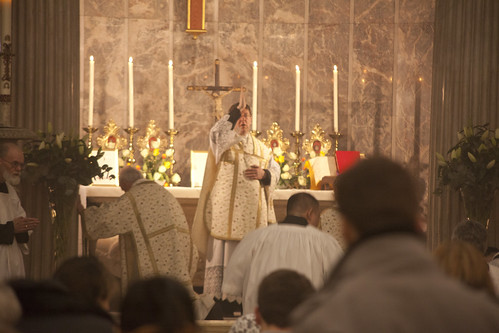 |
| Final blessing |
Support the work of the LMS by becoming an 'Anniversary Supporter'.
Update on LMS Latin Course, 30th July to 3rd August 2018
Dates: 30th July to 3rd August 2018
The Latin Mass Society’s Residential Latin Course for adults is an intensive course, taught by two experienced tutors, focusing on the Latin of the liturgy.
It is ideal for priests and seminarians wishing to improve their Latin, and all clerics and seminarians (and those about to enter seminary) enjoy a 50% discount on the course fees, which are extremely low anyway.
They are joined by lay men and women who wish to engage more closely with the ancient Latin liturgy, or do studies involving Latin.
New tutor for the Chant Weekend, 6-8th April
The Gregorian Chant Network's annual Chant Training Weekend will take place in the Oratory School, near Reading, 6-8th April.
There is a change of tutors to announce: sadly Fr Guy Nichols, who was one of the two tutors last year, can't make it. Instead we will be joined by Matthew Ward, who is Director of Music at Mayfield School.
Full details of the course, and booking, is here.
Support the work of the LMS by becoming an 'Anniversary Supporter'.
Online radio from the Friars at Gosport
 |
| High Mass at St Mary's, Gosport |
Cross-psted from Rorate Caeli.
Maundy Thursday Mass of the Lord's Supper, 29th March 16:00
- Good Friday Solemn Liturgy, 30th March 17:00
- Holy Saturday Paschal Vigil, 31st March 14:00
- Easter Sunday Holy Mass, 01st April 17:00
Support the work of the LMS by becoming an 'Anniversary Supporter'.
Introducing the Vademecum Peregrini
Buy it from the LMS online shop here,
or from Lulu, the printer, here.
We created this booklet for pilgrims on the Walsingham Pilgrimage, but it was always intended to be of wider application, containing information, Mass propers, and special hymns and prayers for Latin Mass Society Pilgrimages to York, Oxford, and Holywell, as well as notes about many others.
After much expansion, revision, and correction, we can now offer this to the general public. If you get a copy and subsequently decide to come on the Walsingham Pilgrimage, you can bring it with you and save a few pounds on your fee.
It contains the Ordinary of the Mass, the same version as the LMS Ordinary Prayers booklet, a number of Mass Propers (prayers and readings) used in pilgrimages, and a great many prayers and devotions useful on pilgrimage and elsewhere: for Communion, for Confession, the Stations of the Cross, the Rosary (with traditional meditations on each Mystery), the Seven Penitential Psalms, and lots more.
In addition is has a huge amount of music in it. Not re-set Chant settings for Mass, but chants, hymns, and songs 'for the road': including the best of traditional Catholic, the most familiar non-Catholic hymns which have become part of our country's common musical and spiritual heritage, and great hymns from Ireland, the USA, Australia, and the Chartres Pilgrimage.
It is 270 pages, in a narrow 'pocketbook' format that - as its name suggests - fits into a pocket.
Where else will you find settings of the Hail Mary suitable for singing the Rosary, in English, Latin, and French?
The Litany of the Saints, of Loreto, of the Sacred Heart, and St Joseph, in Latin, with the music?
The Song of the English Zouaves, sung by the British defenders of the Pope in 1860, with a musical setting by our Patron, Colin Mawby?
Rousing songs to overcome the miles at the end of a long day's walking, such as Men of Harlech, the Battle Hymn of the Republic, and Rule Britania?
All with an Imprimatur from the Archdiocese of Westminster!
We've found it convenient to upload it to the print-on-demand service Lulu, which has printing facilities all over the world. If you are overseas, buy it from Lulu and it will print it locally to you, ovoiding overseas postage.
£9.99 + p&p:
from the LMS online shop here,
or direct from Lulu, the printer, here.
Support the work of the LMS by becoming an 'Anniversary Supporter'.
Walsingham Pilgrimage: early bird offer till Easter!
Get a 10% discount on the fees for the 2018 LMS Walking Piligrimage to Walsingham, until Easter: 1st April. Don't miss out!
The dates are 23th to 26th August (the Bank Holiday weekend): meeting on the evening of the 23rd, and finishing in the afternoon of Sunday 26th.
Walking the 58 miles from Ely to Walsingham with about 60 others, with the Traditional Mass, is an unforgettable experience. This year we will be accompanied by Fr Michael Rowe of Perth, Australia, and Fr James Mawdsley FSSP as our Chaplains.
Our Pilgrim's Handbook - the Vademecum Peregrini - is corrected and revised with the best selection of chants and songs for the road, traditional devotions, and information about this and other pilgrimages.
Support the work of the LMS by becoming an 'Anniversary Supporter'.
Easter Triduum in London; Lassus Tenebrae
Cross posted from Rorate Caeli.
 |
| The Holy Fire is lit outside the church's back door, from which it is a short procession through the streets of the City of London to the church's front door. |
Support the work of the LMS by becoming an 'Anniversary Supporter'.
Join the pro-lifers at London's St Patrick's Day parade
From 'Right to Life'

Dear Supporter,
Last weekend saw the All Ireland Rally for Life in Dublin, at which up to 100,000 people marched for life, for mothers and babies and to save the Eighth Amendment to the Irish Constitution!
Especially if you’re Irish or have Irish ancestry (but even if you’re not or don’t!), to signify your solidarity with this campaign, please join London Irish United For Life as they attend the St. Patrick's Day Parade.
The plan for this is:
–> Meet at the Church of the Immaculate Conception in Farm Street (W1K 3AH) at 10:30 for tea/coffee.
–> Walk to the March starting area between Hyde Park Corner and Half Moon Street in Piccadilly (nearest tubes Hyde Park Corner and Green Park).
–> Those coming late, or who miss the 10:30 meeting can come to the London Irish United for Life starting area, which will be in Section E, Number 57, which is predicted to be between Down Street and Old Park Lane. Stewards in pink high-vis jackets will be there to direct people to sections. People should look out for signs saying ‘Section E’. Everyone needs to be in place by 11:15.
–> Posters will be provided. Remember to wear green!
Last year, the abortion lobby received a boost by the London Irish Abortion Rights Campaign forming a section in the St. Patrick’s Day Parade 2017. This will be an important way to give balance, show support for the fight for the right to life of unborn children, and to bolster the Save The Eighth campaign in Ireland.
Please do share, invite others, and come along!
Thanks in advance for all your help, and thanks again for all that you do to help safeguard human dignity and the right to life.
With our kindest regards,
The Team at Right To Life
Support the work of the LMS by becoming an 'Anniversary Supporter'.
LMS Priest Training Conference: book now! April 9-12th
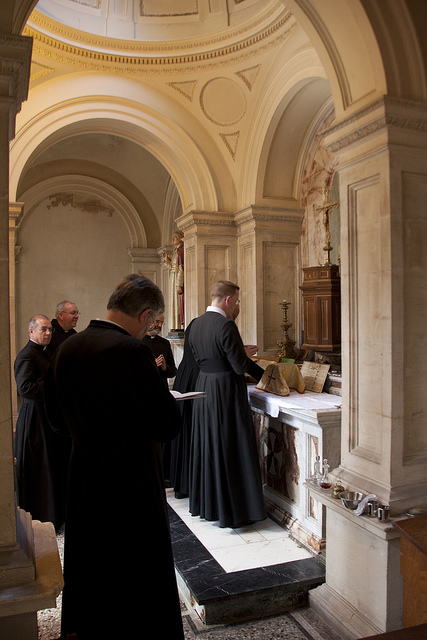 The Latin Mass Society will be holding a residential training conference for priests, deacons, seminarians and laymen wishing to learn to celebrate or serve Mass in the Extraordinary Form. It will be held at Prior Park College near Bath from Monday 9th April to Thursday 12th April 2018.
The Latin Mass Society will be holding a residential training conference for priests, deacons, seminarians and laymen wishing to learn to celebrate or serve Mass in the Extraordinary Form. It will be held at Prior Park College near Bath from Monday 9th April to Thursday 12th April 2018.Tuition will be in small groups. For clergy and seminarians, this will be provided by priests experienced in the Extraordinary Form, for servers this will be provided by laymen with years of experience in the Extraordinary Form.
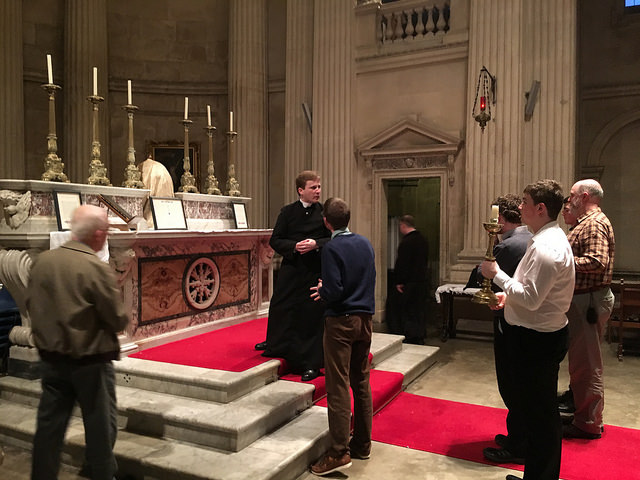 The conference will start after lunch on the Monday and conclude before lunch on the Thursday.
The conference will start after lunch on the Monday and conclude before lunch on the Thursday.Full-time students: £60
Seminarians: FREE OF CHARGE
Support the work of the LMS by becoming an 'Anniversary Supporter'.
SCT Family Retreat: booking reminder
Don't forget to book for the St Catherine's Trust Family Retreat, taken this year by Canons Montjean and Tanner of the Institute of Christ the King Sovereign Priest.
It is taking place at the Oratory School near Reading over Low Sunday Weekend: 6-8th April.
Book online here.
The Retreat is, as its name implies, designed to allow families to attend together. We provide activities for the younger children during the spiritual conferences offered by the retreat-givers. Everyone, however, is welcome to attend.
Prices are lower than last year, and bursaries are available from the Latin Mass Society for those who are in financial difficulties.
Photos of last year's retreat, which took place over Passion Sunday weekend because of the late Easter.
Support the work of the LMS by becoming an 'Anniversary Supporter'.


